#white-crested helmetshrikes
Explore tagged Tumblr posts
Text

A group of white-crested helmetshrikes prepare to sleep in South Africa. Gary Collyer / Bird Photographer of the Year 2024
13 notes
·
View notes
Text
Cool Zoology Stories of 2024
Happy new year! As we head into 2025, here's a few fun zoology highlights from the last year.

The Iberian Lynx is no longer endgangered
Species Concerned: Iberian Lynx (Lynx pardinus)
Source: Here
Image Source: Here
The International Union for the Conservation of Nature (IUCN) is the organisation responsible for compiling information on the size and trends seen in species’ wild populations and assigning them a “conservation status” based on how threatened they are determine to be. There are three increasingly concerning categories a species may be sorted into (vulnerable, endangered or critically endangered, in that order,) and while species may be classified as increasingly threatened if their populations continue to decline they can also be raised to a less threatened category should their population increase. In the summer of 2024, the IUCN made an exciting announcement; based on an assessment carried out throughout 2023 the Iberian Lynx (the most threatened of the four lynx species, and among the world’s rarest wildcats) had done just that, being upgraded to vulnerable from endangered!
Easily distinguished from other lynxes by it’s the distinctive pair of “beard-like” fur tufts on its chin, the Iberian Lynx, as its name suggests, is found only in the southern Iberian Peninsula which stretches across Spain and Portugal. Its already small range has shrunk further due to rapid declines in its primary prey, the European Rabbit (Oryctolagus cuniculus), further aggravated by habitat loss, disease outbreaks, conflict with humans and the addition genetic pressures that species with small populations experience. By 2001 the species’ population had declined to as few 62 adults, but since then intensive efforts to increase the populations of European Rabbits, protect remaining Iberian Lynx populations, introduce captive-bred individuals and encourage land owners to reduce impacts on any lynx populations on their land has allowed for a steady increase – as of 2023 the population was believed to have risen to 648 adults, and members of this species have returned to long-vacant regions of their former range! While the Iberian Lynx remains threatened and continued efforts are needed to maintain these increases, the species’ new conservation status shows that these efforts are working, and that there may yet be hope for this beardy big cat’s future.

Big News on Baby Sharks!
Species Concerned: Great White Shark (Carcharodon carcharias)
Source: Here
Image Source: Here
Despite its large size, near-cosmopolitan distribution and status as easily one of the most famous and recognisable fish on earth, there’s a lot we don’t know about the Great White Shark. In particular, there are some major gaps in our understandings of the mating habits of adult Great Whites, and in the early development of their pups. This year, however, progress was made in filling some of these gaps; in April an article published in the journal Frontiers in Marine Science described activity within a “creche” of young (1-6 year old) Great Whites off the coast of California, demonstrating that (among other things) they moved between deeper and shallower coastal waters throughout the day and seemed to carefully position themselves within the water column in order to maintain a healthy body temperature and thereby facilitate growth and development (unlike many fish adult Great White Sharks are able to regulate their body temperature through metabolic activity much like mammals can, but it seems that younger individuals have a reduced ability to do so and are more reliant on environmental conditions to regulate their body temperatures. This is particularly exciting as an article published this January to another journal, Environmental Biology of Fishes critically examined footage recorded by wildlife photographer TheMalibuaArtist of a small, round-featured Great White Shark off also found near California’s coast that had an odd, pale film attached to its skin and concluded that (while it is possible that the film is the result of some previously undocumented disease or mutation) it may represent the first ever video footage of a newborn Great White Shark, with the film being debris that attached to the potential pup during live birth. The Great White Shark, despite its dreaded reputation, is itself classified as vulnerable by the IUCN, so gaining greater understanding of how members of these species live in their earliest years may prove invaluable in protecting wider populations!

The 200th Anniversary of the First Dinosaur Getting Named
Species Concerned: Megalosaurus (Megalosaurus bucklandii)
Source: Here
Image Source (excluding some...minor additions): Here
On February 20th 1824 the geologist and palaeontologist William Buckland became the first person to give a formal scientific name to a (non-avian) dinosaur, describing a set 160 million year old reptile-like bones found in Oxfordshire, England as “Megalosaurus”, which can be translated literally to “big lizard” (though is more often translated as the more dignified-sounding “great lizard.”) This means that this February marked the 200th anniversary of Megalosaurus getting its name and, in some ways, the beginning humanity’s long-standing love of and obsession with dinosaurs.
Based on the incomplete remains that had been discovered Buckland originally imagined Megalosaurus as being an enormous, slow-moving, lizard-like animal (kind of like an iguana crossed with an elephant.) However, further studies into the fossils of Megalosaurus and of numerous anatomically similar and therefore likely related animals have since demonstrated that it was a large, likely relatively fast-moving carnivorous biped, and a relative of modern birds (which, like Megalosaurus, are therapods.) Megalosaurus lived in what is now northern Europe throughout the mid-Jurassic period, while its closest relatives, the Megalosaurids, could also be found across Africa, Asia and North America and survived until the very end of the Jurassic. 17 years after Megalosaurus got its name it, alongside the early cretaceous ankylosaur Hylaeosaurus and the iconic spiky-thumbed ornithopod Iguanadon (all still imagined to be iguana-like at the time) would be recognised as relatives of one another based on similar anatomical features, becoming the first three genera to be classified as part of the clade that today contains all dinosaurs, the Dinosauria.

The Golden-Crested Helmetshrike was Photographed for the First Time
Species Concerned: Golden-Crested Helmetshrike (Prionops alberti)
Source: Here
Image Source: Here
Between December 2023 and January 2024 a collaborative team of researchers from the Democratic Republic of Congo and the USA set out to document the wildlife living in the Itombwe mountain region of South Kivu, DOC. Records of the species present in an around Itombwe are limited and every observation made during the trip was valuable, but perhaps the most exciting was the several sightings of the Yellow-Crested Helmetshrike, marking the first time this species has been formerly recorded in nearly 20 years and allowing for it to be photographed for the first time ever!
While several potential sightings have been reported elsewhere in central Africa, the Golden-Crested Helmetshrike is believed to be endemic to the DOC, making its home mainly in humid forests at high altitudes. Immediately distinguished from other birds in their range by the titular crests of bright yellow feathers that runs across their heads, members of this species live in small flocks and are extremely agile in flight, using their agility to hunt airborne insects. A lack of internationally available documented sightings of this species since the early 2000s had led to fears of its potential extinction, but as at least 18 individuals were sighted during the team’s expedition the species is now known not only to be surviving, but potentially to be more abundant within its home range than previously thought!

Frogs and Wolves got in on Pollination
Species Concerned: Izecksohn's Brazilian Tree Frog (Xenohyla truncata) and Ethiopian Wolf (Canis simensis)
Sources: Here and Here
Image Sources: Here and Here
Insects are by far the most important pollinators on earth (with some 80% of plants relying on insect-based pollination to reproduce,) but there are also many important vertebrate pollinators (most notably nectar-drinking bats and birds.) Pollinating vertebrates are important not only to wild plants but also to crops, wit mangos, durians and bananas all relying heavily on vertebrates to spread their pollen. 2024 saw two surprising new additions to the list of potential vertebrate pollinators; the unusual Izecksohn's Brazilian Tree Frog and the endangered Ethiopian Wolf!
Found only in Rio de Janiero, Brazil, Izecksohn's Brazilian Tree Frog is unusual among frogs in that while almost all frogs are carnivorous members of this species prominently feed on fruit and nectar. Like other nectar-feeding animals, as they move between flowers they carry pollen with them, making them the only known amphibian pollinators. The Ethiopian Wolf, native to high-altitude regions of Ethiopia, is among the rarest wild dogs on earth and has typically been thought of as a strict carnivore. In November of 2024, however, members of this species were recorded feeding on the flowers of the Red Hot Poker Plant (Kniphofia foliosa), transferring pollen on their muzzles in the process. While further studies are needed to determine quite how important either species is in pollination, it still suggests that the number of pollinating vertebrate species in the world may be greater than previously thought!
--------------------------
Have a great new year!
#Happy New Year!#zoology#biology#animal#animals#mammalogy#marine biology#ornithology#paleontology#wildlife#iberian lynx#great white shark#megalosaurus#golden-crested helmetshrike#ethiopian wolf
140 notes
·
View notes
Text


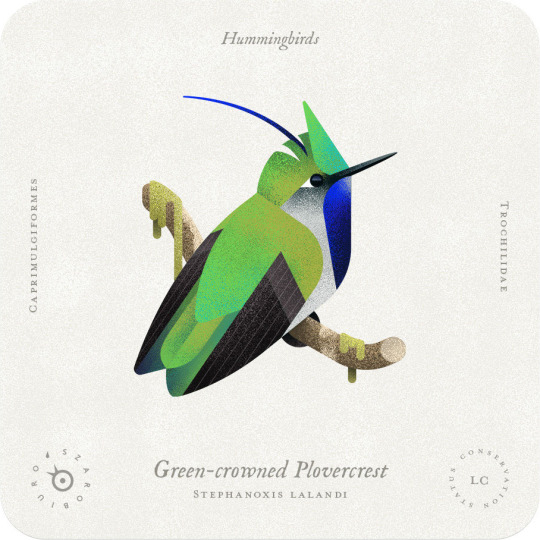

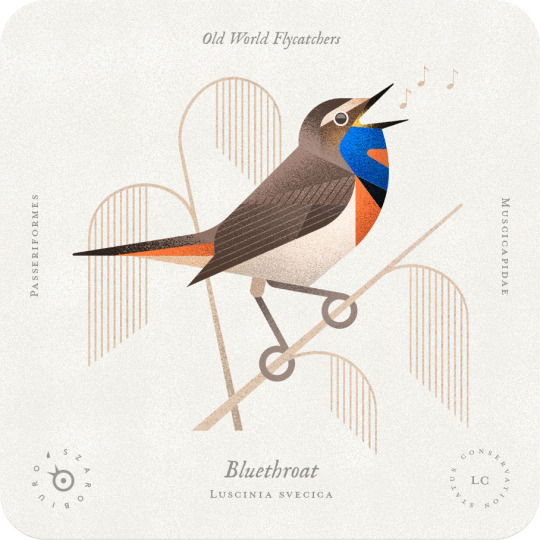
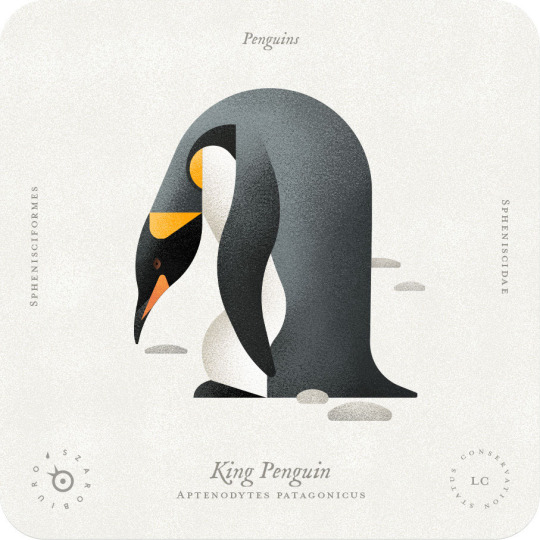
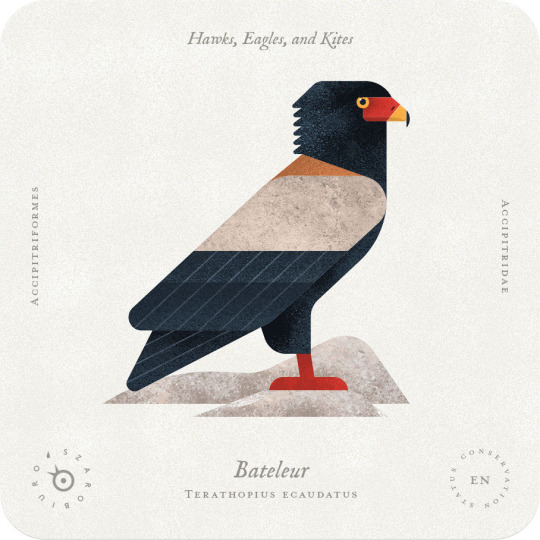
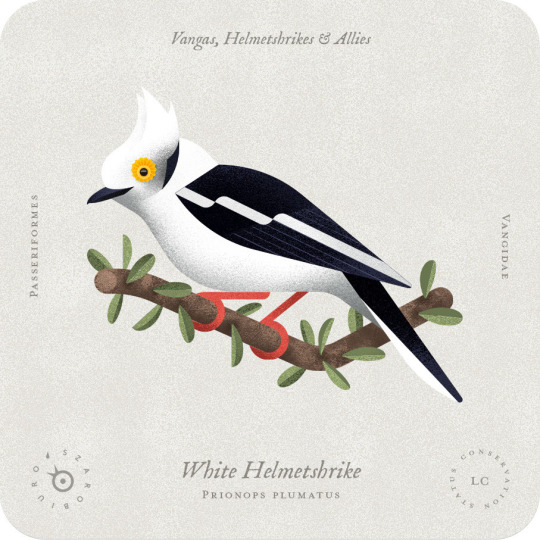


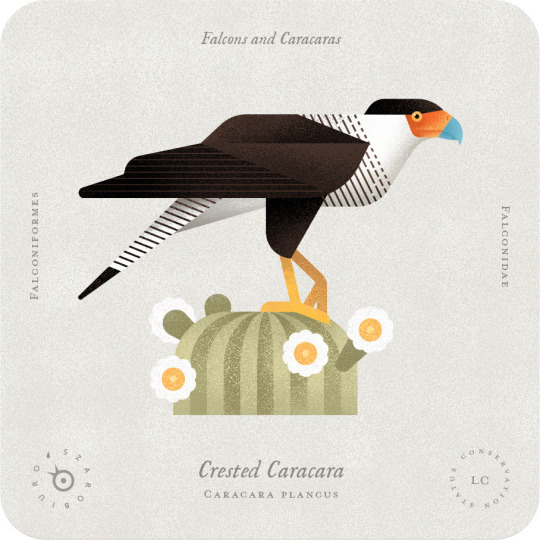

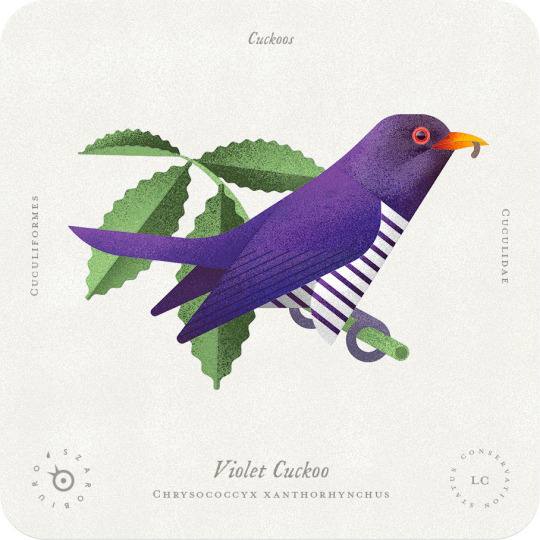
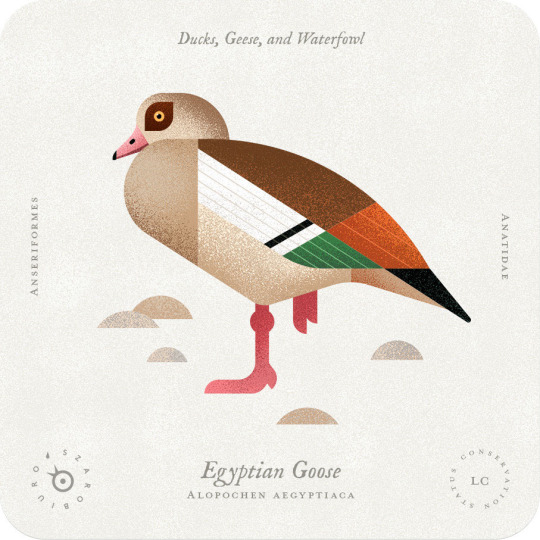
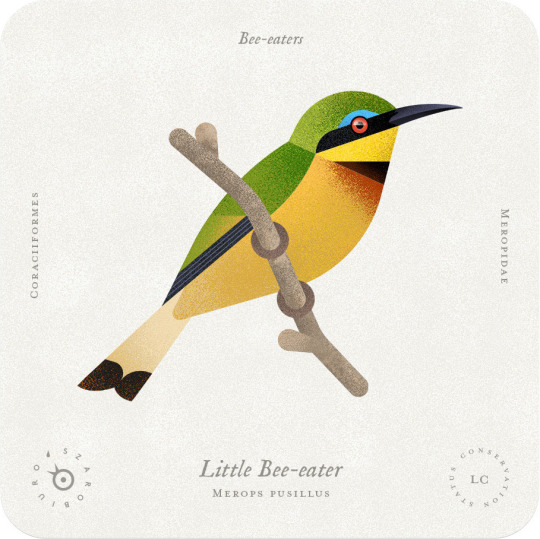


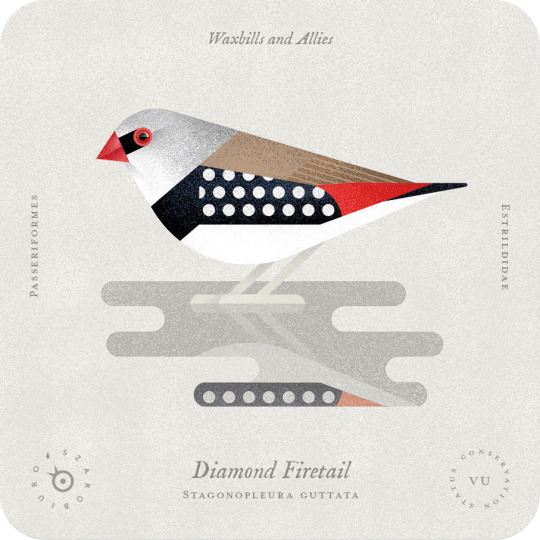
Birbfest Collection 2024, by Aga Więckowska.
#art#aga więckowska#birds#evening grosbeak#red-billed oxpecker#green-crowned plovercrest#cerulean warbler#bluethroat#king penguin#bateleur#white helmetshrike#crested caracara#papuan eclectus#violet cuckoo#egyptian goose#little bee-eater#grandala#white-browed tit-warbler#diamond firetail
127 notes
·
View notes
Photo

White-crested Helmetshrike (Prionops plumatus)
© Fikret Ataşalan
36 notes
·
View notes
Text

Day 12 : The helmetshrike's silent song
#bleeding hearts#bird#antique art#armor#white crested helmetshrike#inktober 2024#this one was an anonymous request - thank you !
45 notes
·
View notes
Text

White-crested Helmetshrike
#White-crested Helmetshrike#birbfest#birbfest2024#art#illustration#drawing#animals#wildlife#birds#artists on tumblr#birbs#sketchbook#sketch#artwork#colored pencils#traditional art#traditional drawing#helmetshrike
42 notes
·
View notes
Text
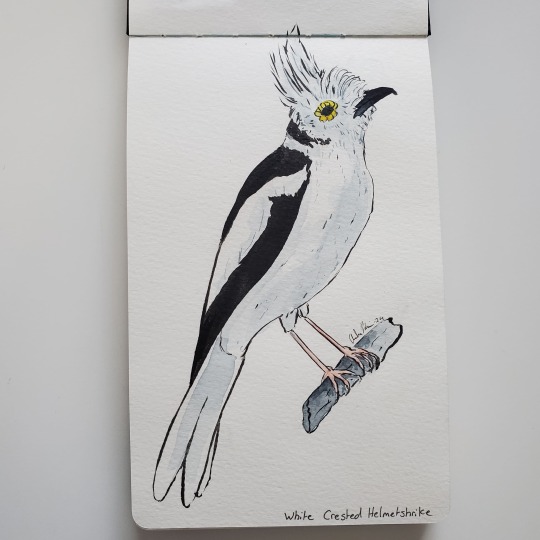
Birbfest 2024 Day 9: White Crested Helmetshrike.
#birbfest 2024#Birbfest#white Crested helmetshrike#art#watercolor#painting#watercolors#brush pen art#bird art
2 notes
·
View notes
Text
Look at the little flower eyes
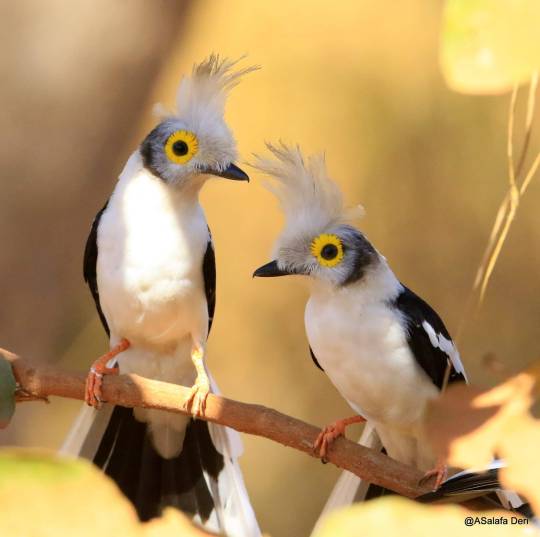
White-crested Helmetshrike (Prionops plumatus) in Senegal by ASalafa Deri.
6K notes
·
View notes
Text
daily birds week 25!


white-bellied treepie + ornate hawk-eagle


australian magpie + white-crested helmetshrike


wood thrush + white-winged fairywren

yellow-tufted woodpecker
141 notes
·
View notes
Text

White crested helmetshrike. Source image by Asalafa Deri, sketch and colours by me
2 notes
·
View notes
Text
[image description: two white birds with black wings. they have white tufts of feathers sticking out on top of their heads and their eyes are rimmed with bright yellow feathers /end ID]
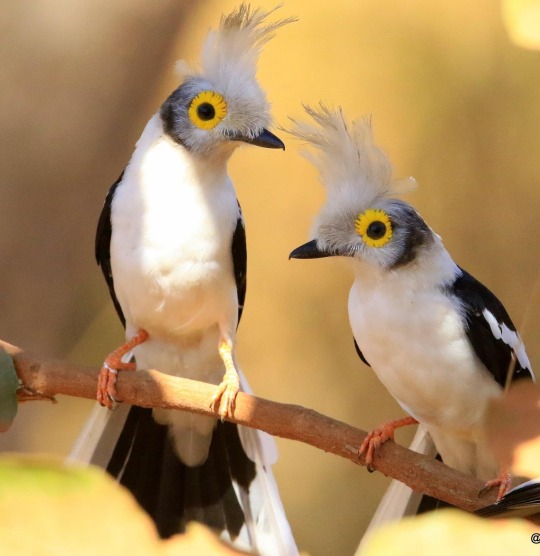
White-crested Helmetshrike (Prionops plumatus), family Vangidae, found throughout much of Africa
Photograph by ASalfa Deri
2K notes
·
View notes
Text
Small birds 8K ULTRA HD with Names and Sounds

Small Birds in Vivid 8K Ultra HD: Names and Nature's Melodies Immerse yourself in the breathtaking world of small birds showcased in immaculate 8K resolution. This video not only offers vivid visuals of these avian wonders but also introduces each with their names and distinctive calls, letting you identify and appreciate them. Small BIRDS 8K ULTRA HD with Names and Sounds https://www.youtube.com/watch?v=m91SBnRxlYQ From the vibrant hues of the cardinal bird and sunbird to the mesmerizing sounds of the dark-eyed junco and bearded reedling, each moment brings you closer to nature's beauty. Whether you're an avian enthusiast or just looking to unwind, this 8K experience provides both educational and aesthetic value. With added ambient sounds like the rustling of leaves, gentle waves, and distant animal calls, the ambiance becomes more authentic and immersive. For an enhanced viewing experience, we've incorporated educational elements, including commentary, voice-overs, and on-screen identifiers for each bird. Some of the avian stars featured include: - Scarlet tanager, cape longclaw, daurian redstart - White-crested helmetshrike, barred antshrike, red-backed shrike - Silver-breasted broadbill, european goldfinch, baltimore oriole - Golden-breasted starling, barred warbler, banded kingfisher - Broad billed hummingbird, woodlark, meadowlark ...and many more. With a delightful combination of nature's visuals and symphony, this video serves as a relaxing escape and an educational journey. Dive in and let the colorful world of birds enrich your day!
8K Ultra HD: The Pinnacle of Visual Clarity
As the world of technology constantly evolves, the realm of display resolutions has reached new heights with 8K Ultra HD. Here's a deep dive into this visual marvel: Definition: 8K Ultra HD, with a resolution of 7680 × 4320 pixels, offers a staggering four times the number of pixels as 4K (3840 × 2160) and sixteen times the resolution of Full HD (1920 x 1080). Benefits: - Unparalleled Detail: 8K resolution captures intricate details that can be discerned even when viewed up close on massive screens. - Enhanced Depth: The richness of pixels in 8K translates to more depth and three-dimensionality, making visuals pop out. - Improved Color Accuracy: With the additional data in each frame, there's a broader range of colors and greater color accuracy. - Post-Production Flexibility: For videographers, having 8K footage means more flexibility during editing, such as cropping, zooming, and stabilizing videos without sacrificing quality. Hardware Considerations: - Display Size: To fully appreciate 8K, one would typically need a larger screen (65 inches or above). - High-speed Connections: Streaming or playing 8K content requires robust data handling. HDMI 2.1, for instance, supports 8K video at 60fps. - Storage: 8K videos, particularly those at higher frame rates, can be massive in size, necessitating considerable storage capacity. Content Availability: As of recent years, 8K content has been somewhat limited. However, with the advent of 8K cameras and TVs, more content creators are adopting this resolution, making it more accessible to the general audience. Future of 8K: With the proliferation of technology, 8K will likely become more standard, especially for larger displays and professional setups. As bandwidth improves and storage becomes cheaper, 8K could soon be as commonplace as 4K has become today. In conclusion, 8K Ultra HD is not just a step but a leap forward in the world of visual display technology, promising a viewing experience that is nothing short of mesmerizing. Whether for professional use or personal entertainment, 8K is the epitome of what the future holds. Read the full article
0 notes
Photo
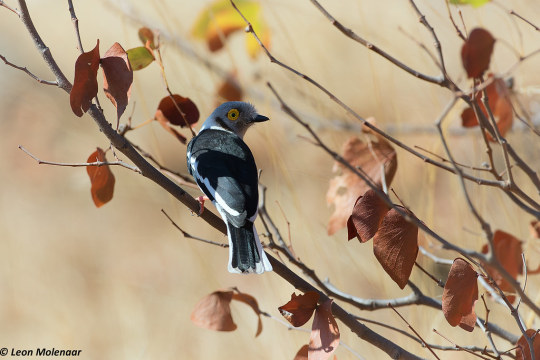
White-crested Helmetshrike (Prionops plumatus)
© Leon Molenaar
14 notes
·
View notes
Note
For the inktober requests: White-crested helmetshrike! (Prionops plumatus cristatus specifically)
thank you for your idea :-)
#i'm not 100% satisfied with this piece though :'D#the white crested helmetshrike is a fantastic bird and i'm not sure i did it justice. Something about my inking makes it feel a little off#there's only so much you can do in a day. my next one will only be better :D#request#ask
1 note
·
View note
Text
[image caption: a headline which reads ''Lost Bird' not seen in 20 years photographed for the first time'. Below is the byline 'The yellow-crested helmetshrike has noisy calls that match its bright feathers'. It is by Laura Baisas, was published February 21st 2024 at 4:45 PM EST, and is filed as 'environment' and 'science'.
Below is a close-up picture from the side of a yellow-crested helmetshrike being held in a human hand. It has its beak angled up and is looking at the person holding it. It has a black body and beak with a yellow cap of feathers starting at its eye, which is also ringed in yellow. In front of its eye is a small white patch. end caption.]
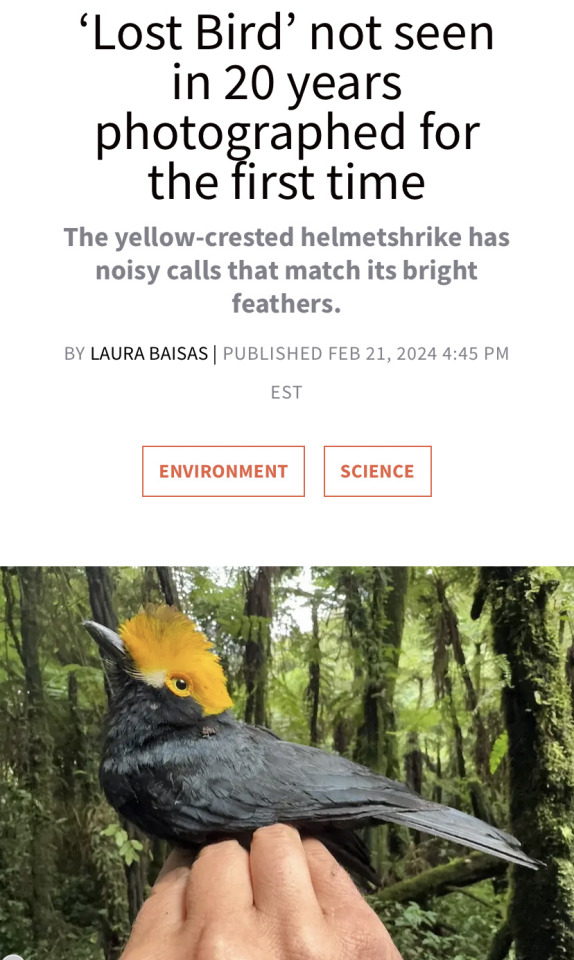
WELCOME BACK YELLOW-CRESTED HELMETSHRIKE!!!
29K notes
·
View notes
